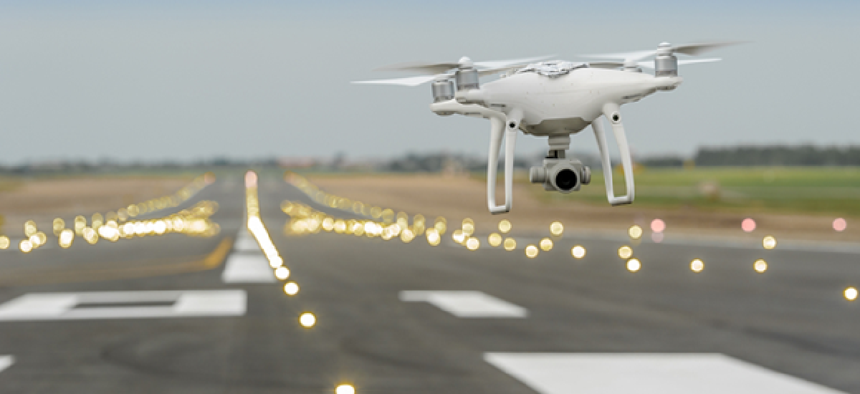New York testing drones with 5G network

Researchers at the state’s drone testing range will be experimenting with a 5G network to help advance innovation in unmanned aircraft systems.
New York’s drone testing range will be using a 5G network to help advance innovation in unmanned aircraft systems.
The MITRE Engenuity Open Generation 5G Consortium has identified the Syracuse to Rome corridor as a prime location to launch the nation's first 5G UAS testing range, Gov. Kathy Hochu announced.
The consortium is leading UAS-over-5G research for emergency response, infrastructure inspection, package delivery and asset management. The corridor is managed by NUAIR, a New York-based nonprofit and member of the consortium. It works with a number of states on advancing 5G UAS operations.
The 100-square-mile testing range will include an experimentation hub dedicated to 5G beyond-visual-line-of-site testing and long-range flight paths, a capability that will be critical to safe and secure commercial unmanned aircraft, New York officials said in the announcement.
Early-stage testing has already demonstrated the viability of using 5G to pilot drones and has collected meaningful data to help guide standards development and inform use cases.
In 2016, New York invested $30 million in development of the UAS traffic management corridor between Syracuse and Griffiss International Airport in Rome. Over the past five years, the state has put in nearly $70 million to advance the UAS industry in Central New York and the Mohawk Valley, which are now well positioned to conduct advanced 5G testing.
The Air Force has been flying large, unmanned aircraft out of Syracuse Airport since 2015, and the city has already started preparing for 5G, installing smart streetlights capable of supporting a 5G communications network.
Rome is home to the New York State Unmanned Aircraft Systems Test Site, one of only seven FAA-designated unmanned aircraft systems test sites in the nation.
Many in the telecommunications industry are looking to 5G spectrum for advanced UAS operations and hope to have it approved by the Federal Aviation Administration and the Federal Communications Commission for use in airspace under 400 feet, which is where commercial drone operators typically fly. The 5G testing in New York will help demonstrate that the 5G cellular network meets aviation safety requirements.
"The industry is looking for an FAA and FCC approved communications network that has the capability and reliability needed for safe commercial drone operations,” NUAIR CEO Ken Stewart said. “5G holds the promise of unlocking scalable, economically viable drone operations, and we are confident that our work in New York will help determine if 5G is a suitable solution for the UAS industry."
UAS over 5G has many commercial uses, N.Y. Sen. Rachel May said. "This technology has the potential to greatly improve the deployment of drones for infrastructure monitoring, installation of solar technology, faster and more efficient delivery of goods, and many others. It is exciting to see continued investment in our region from innovators."





